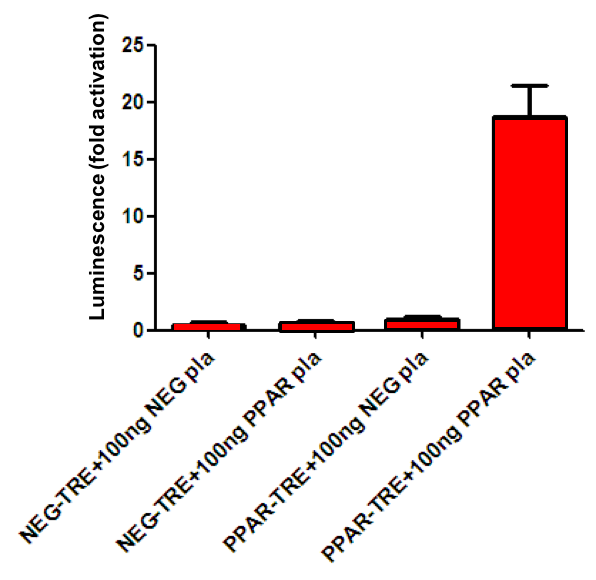GeneCopoeia’s GLuc-ON™ PPAR transcriptional response element (TRE) clone enables analysis of transcriptional activity of peroxisome proliferator-activated receptors (PPARs). PPARs are a family of three nucleus-localized transcription factors-PPARα, PPARβ/δ, and PPARγ that lead to peroxisome proliferation in response to lipid ligands. PPARs are important players in treatment of various diseases, such as obesity and diabetes.
The GLuc-ON™ PPAR TRE clone contains tandem repeats of PPAR upstream of a minimal promoter and secreted Gaussia luciferase reporter gene, which allows robust and sensitive analysis without lysing the cells. The PPAR response elements are engineered to provide strong activation with low background (Figure 1). The GLuc-ON™ PPAR TRE clone is provided as transfection-ready DNA. Negative (non-activating), positive (constitutively-activated) ,and normalization (secreted alkaline phosphatase) control clones are also available for purchase.


